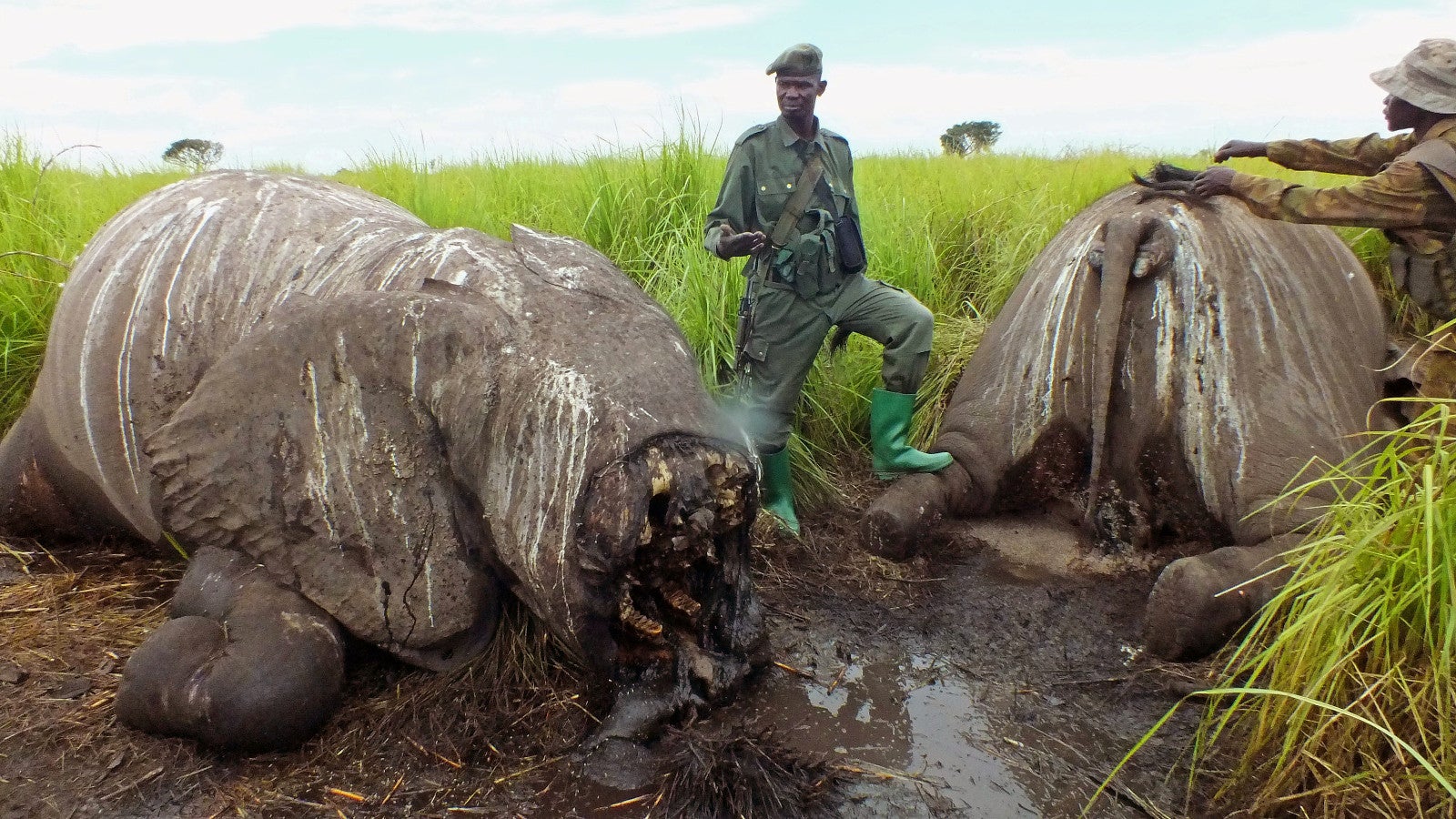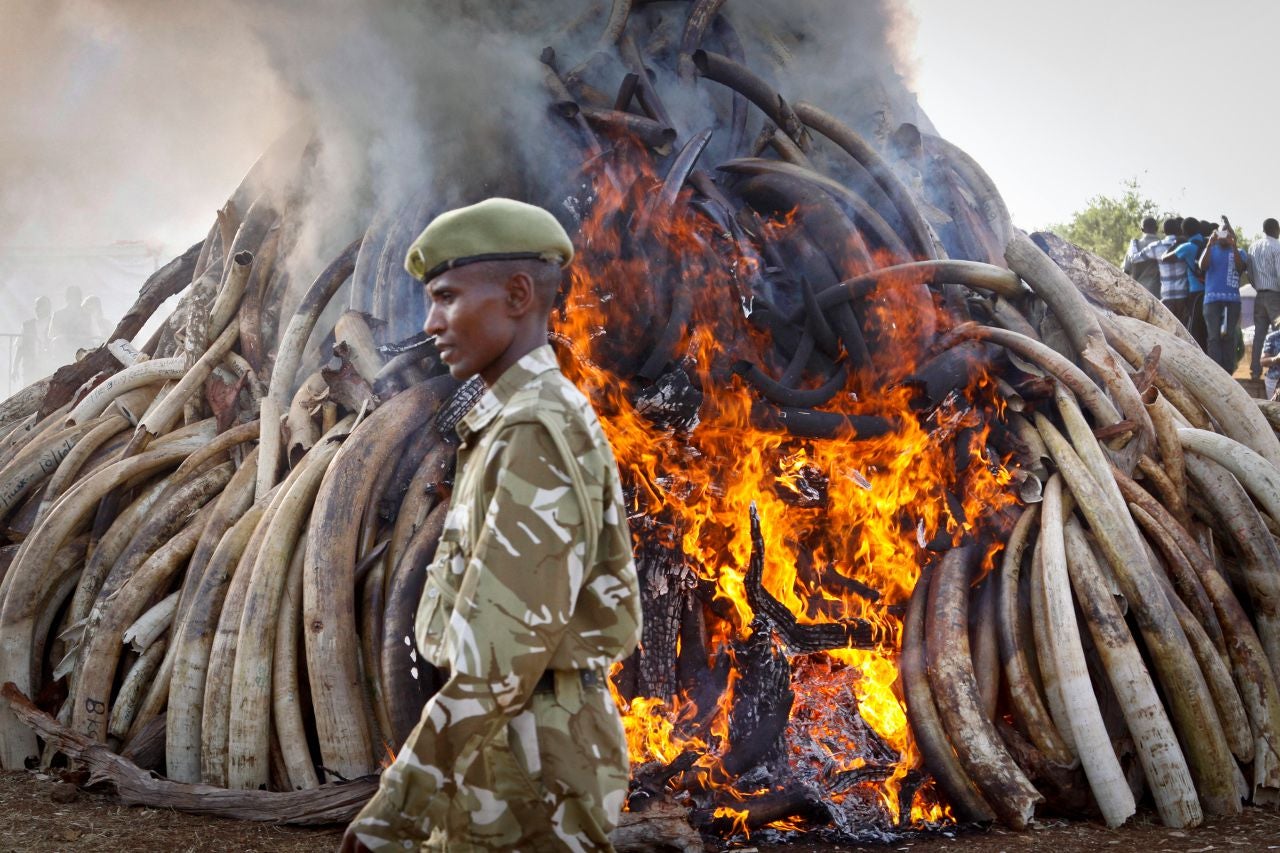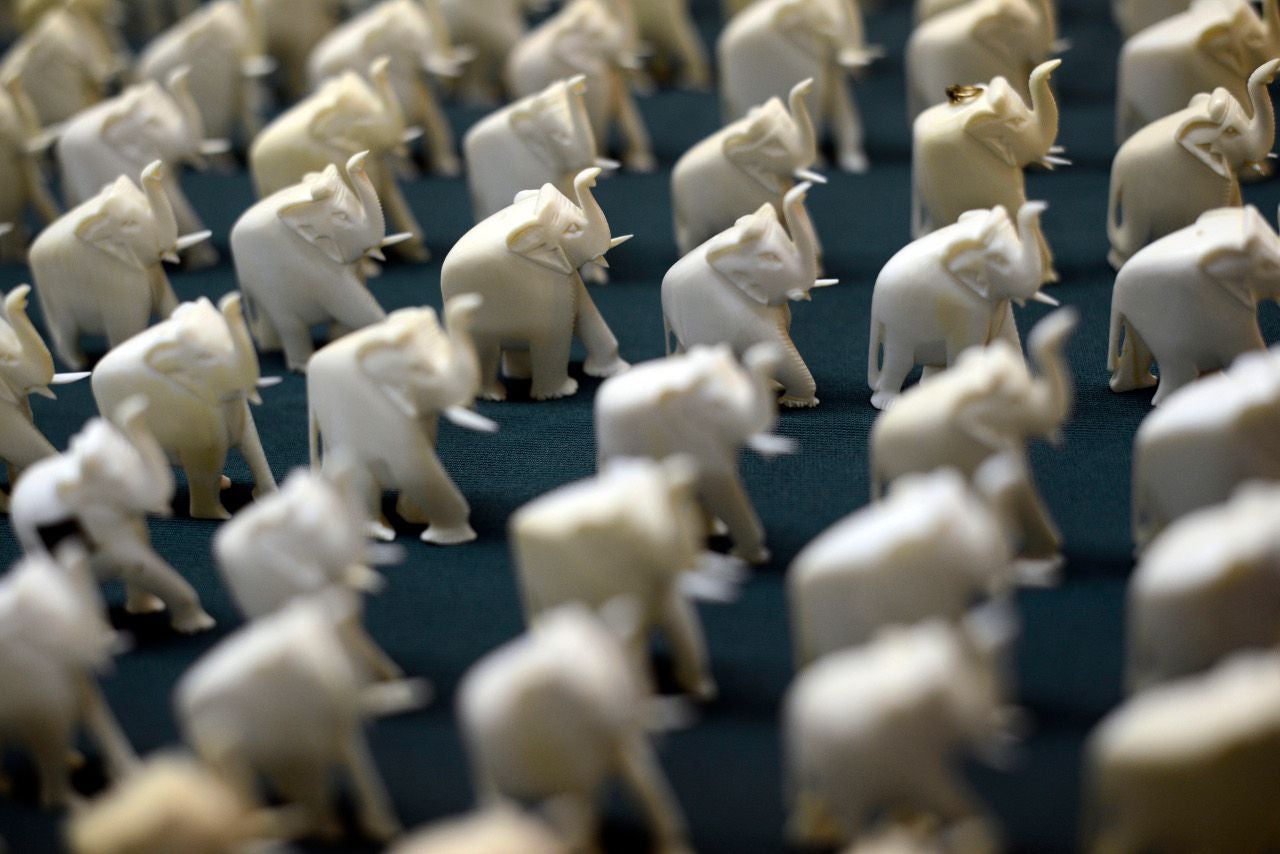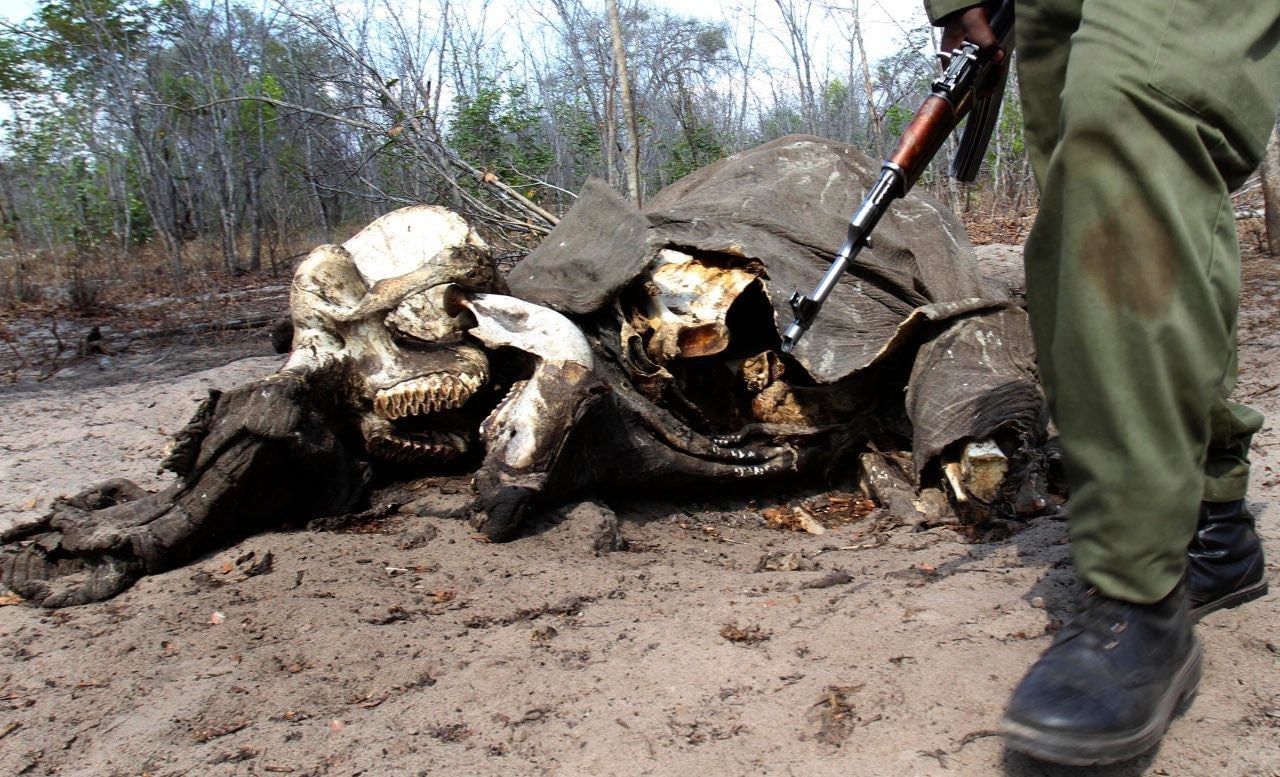To end elephant slaughter, the US should eliminate its own ivory market
As China, long notorious for its appetite for elephant ivory, moves toward halting the domestic processing and sale of the ornamental material, some international wildlife organizations are pointing the finger at another country that shares responsibility for the slaughter of tens of thousands of elephants a year by poachers in Africa: the United States, the second-largest retail market for ivory in the world after China.


As China, long notorious for its appetite for elephant ivory, moves toward halting the domestic processing and sale of the ornamental material, some international wildlife organizations are pointing the finger at another country that shares responsibility for the slaughter of tens of thousands of elephants a year by poachers in Africa: the United States, the second-largest retail market for ivory in the world after China.
The timeline for China’s eradication of its ivory trade remains unclear, but at a recent event in Beijing where more than 1,500 pounds of confiscated ivory were symbolically destroyed, Zhao Shucong, leader of China’s State Forestry Administration, said: “We will strictly control ivory processing and trade until the commercial processing and sale of ivory and its products are eventually halted.”
Meanwhile, the United States still has a legal market for ivory, and its laws include loopholes that allow the illegal ivory market to persist, wildlife advocates say. They have argued that even a very restricted legal trade stimulates the demand for ivory and, therefore, supports the black market.
In the meantime, the poaching crisis in Africa has reached unprecedented and devastating levels: Tanzania has lost close to 60% of its elephants, and Mozambique 50%.
Last year, president Barack Obama’s administration announced a set of efforts to restrict and eliminate the ivory trade. The National Strategy for Combating Wildlife Trafficking & Commercial Ban on Trade in Elephant Ivory included a complete ban on the commercial import and export of African elephant ivory, prohibited interstate sales of all ivory items except authentic antiques (it will be illegal to sell or buy ivory items, unless it can be proven that they are more than 100 years old) and limited to two the number of elephant trophies that a hunter can bring into the country per year.
However, these measures are not fully implemented yet, and they have been stuck in a “bureaucratic maze,” according to Peter LaFontaine, campaigns officer of the International Fund for Animal Welfare (IFAW).
“It has been a slow process, made even more difficult by opposition from the National Rifle Association and trophy hunting groups, but the leadership over at U.S. Fish & Wildlife Service seems to be committed to closing as many loopholes as possible in order to remove the US from the poaching equation.” LaFontaine told Quartz.
The average number of illegal elephant specimen shipments seems to have actually increased over the last few years, from 4,490 imports and 630 exports annually between 2009 and 2012; to 5,370 imports and 890 exports annually between 2013 and 2014, said LaFontaine.
Smugglers bring thousands of illicit ivory tusks and carvings into the US each year, explained in a report Jeff Flocken, IFAW’s regional director for North America. Then traffickers “launder” recently-poached ivory by selling it to “unsuspecting retailers and consumers.”
“Given the difficulties of visually determining the age and origin of ivory, the legal market actually facilitates commerce in nonantique ivory.” explained the report.
Sites such as Craigslist hide some of these contraband materials. In an investigation carried out for four days across 28 cities, IFAW and Wildlife Conservation Society found 522 posts selling more than 600 elephant ivory and other wildlife items, including tusks valued at almost $1.5 million.
Another problem is the lack of resources at the FWS Office of Law Enforcement. The shrinking crew of inspectors and agents at ports have increasing difficulties to intercept illegal shipments.
“It has about the same number of agents that it did in the 1970’s, and Congress’s recent spree of budget cuts is designed to bleed resources away from conservation efforts like this,” said LaFontaine. “We need more funding for enforcement.”
Last year, this agency suspended all ivory imports from elephants killed in Tanzania and Zimbabwe, stating that, even if legal, hunting in these countries “is not sustainable.”
IFAW calculates that there are less than half a million elephants left alive in Africa. Every 15 minutes one of them is killed.


